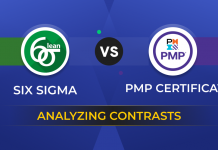
Kanban project management is a popular project management methodology. But what exactly is Kanban? Read further to know the answer.
The practice of being organized is essential to the flow of business information. Without proper categorization or understanding of where data needs to start, move, and stop, information would be distributed inefficiently and ineffectively creating lower-quality business decisions. An interview conducted by Forbes assessed the importance of agility to business operations. Out of the 500 individuals holding senior positions within their organization worldwide, 92% of them believed being agile is critical to a business’s success.
Kanban works as a project management tool. Classified under agile management styles, the Kanban method is adaptable to almost any organization in any industry that needs to prioritize clear workflows and organize multiple teams.
Kanban Basics
Kanban is a Japanese term that translates to the visual signal. Popularised by the Toyota supply chain in the 1950s, the concept gained traction in publicity and application in the 1980s. The methodology focuses on clarifying product/process development and ensuring fluid patterns of delivery to required stakeholders. Kanban systems optimize value flows.
Kanban is an exciting business organization tool. It allows for visual depictions of workflows, making things more transparent and concise for planners and executors within an organization. The flexibility of the model allows for adaptation to any process or project. If a business activity requires an organization to dissect tasks and responsibilities to various team members and a strong progress monitoring system, Kanban boards are ideal.
The process follows nine fundamental principles:
- Starting with what you are aware of
- Introduce slow, progressive change with long-term results
- Understand the value of existing roles, designations, responsibilities, and process
- Leadership and executive decision-making should be encouraged at any level
- Visualize the flow of work
- Allowing Work-In-Progress to be exercised with limits
- Ensure the flow of information is valid
- Enforce firm rules and regulations for process execution
- Allow for constant improvement using business models and methods used to enhance business practices (e.g., other agile methodologies).
What Is Kanban Project Management?
31% of organizations are unable to meet the business goals and objectives set when initially undertaking a project or process. Project managers need a more efficient and effective way to ensure workflows are moving as they should, and that all participants are aware of the requirements.
Kanban project management helps organizations visualize their flows from end to end. This allows them to see where products/services/data are created, further developed, and deposited. As a result, teams handling their departments and processes can map out all tasks required for project completion as smoothly as possible.
Benefits Of Kanban Project Management
Listed below are a few benefits of using Kanban management.
- A firm foundation for all work to be segregated and organized
- Stronger vigilance on projects and complementary tasks
- Project/Process cycles take less time with better information flows
- The weight is shared equally between all team members and, as a result, allows a calmer working environment
- The movement within workflows works towards efficiency and effectiveness
- Project status is transparent and is easier to understand
- The workflow is understood from both an objective and subjective point of view
- With fluid lines of movement mapped out, patterns of positive business results become predictable
- Working environments become firmly honest and more precise
How To Use Kanban Boards For Project Management?
Kanban boards have seen successful use in project management. Utilizing flexible but visual methods of management allows for an adaptive system within the organization. The basic breakdown involves three main columns that dissect activities into requested, in progress, and completed. This will enable projects or processes pursued to be stated, and all activities required for its success are entered and further dissected. With a clear idea of workflow, the team can then build a Kanban board.
The team board follows the same three-column format but allows for overlap. As individuals can possess many roles of responsibility, visual trackers can be placed to associate an employee with the tasks being handled by him/her. This could be enforced through a color-coding system.
When assessing a project’s status, having a look at the project’s swimlane or trajectory within the Kanban board offers clear insight into the tasks completed, to be completed, and partially completed.
Which Projects Benefit Most From Kanban?
Any project that requires firm monitoring, breaking down, and classifying could significantly benefit from implementing a Kanban system. However, three departments in particular show maximum benefit;
The Development Team
Introducing a new product/service/process into an organization is complicated. Utilizing Kanban within this environment allows development teams to focus on the goals to be achieved and list their methods clearly and concisely.
The Operations Team
The flexibility of the Kanban framework shines in the operations department. With a large number of simultaneously running tasks, a Kanban board can chart movements in advance. If items of importance appear without warning, they can be easily accommodated within the Work In Progress column.
The Quality Assurance Team
Looking at multiple projects within multiple scopes at varying distribution times makes quality testing messy. Kanban allows team members to prioritize their work as they see fit and slide processes up and down the chain to create a more streamlined process and more efficient use of their time.
Kanban can be used in various industries, including HR, Sales, Support, UX Design, Digital Marketing, Software Development, Business Consultancy, Law, Architecture, and Education.
Final Thoughts
Kanban project management offers a firm foundation for better business practices. Transparency lies at the core of this practice, tracing firm visual depictions and aids to map all value transfers within the organization. Trained Kanban managers can input, track progress, and understand results. This keen understanding of company processes allows for further streamlining to create more efficient and effective business operations.
















